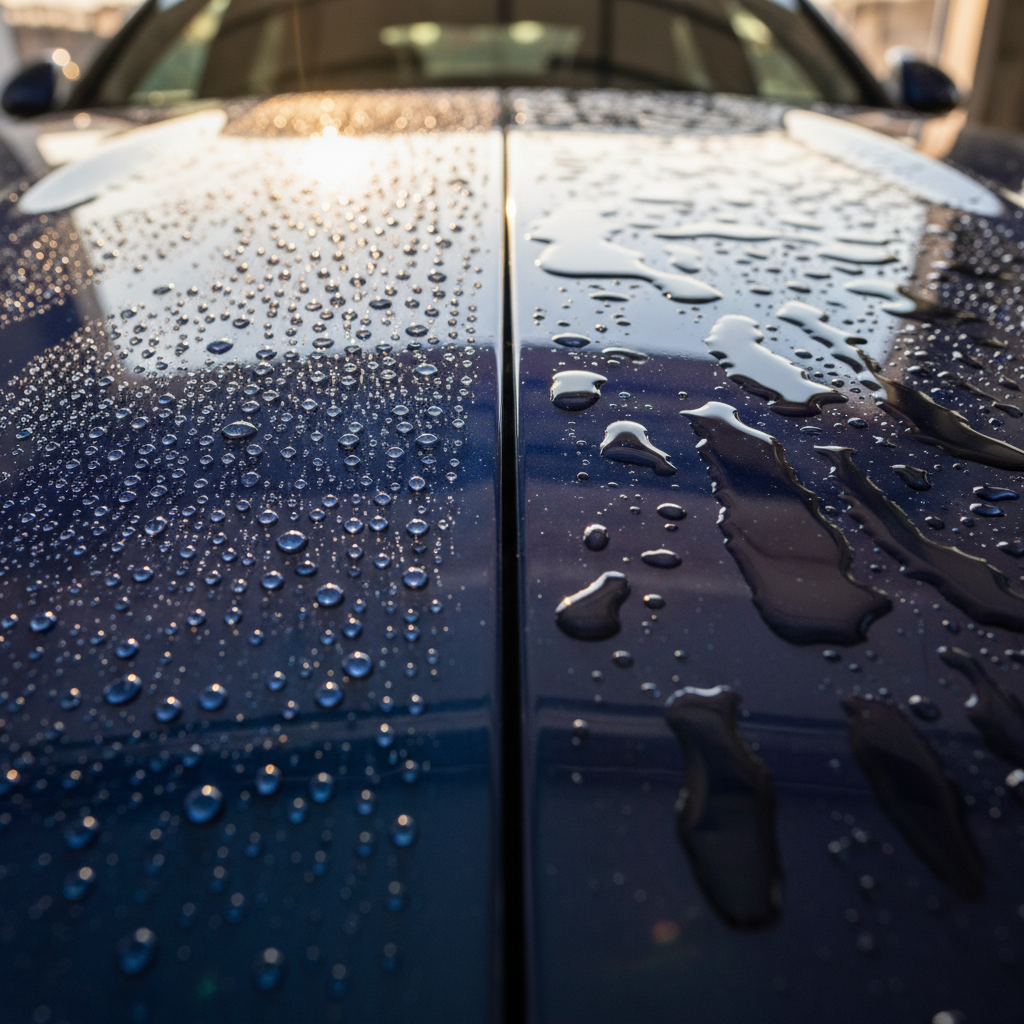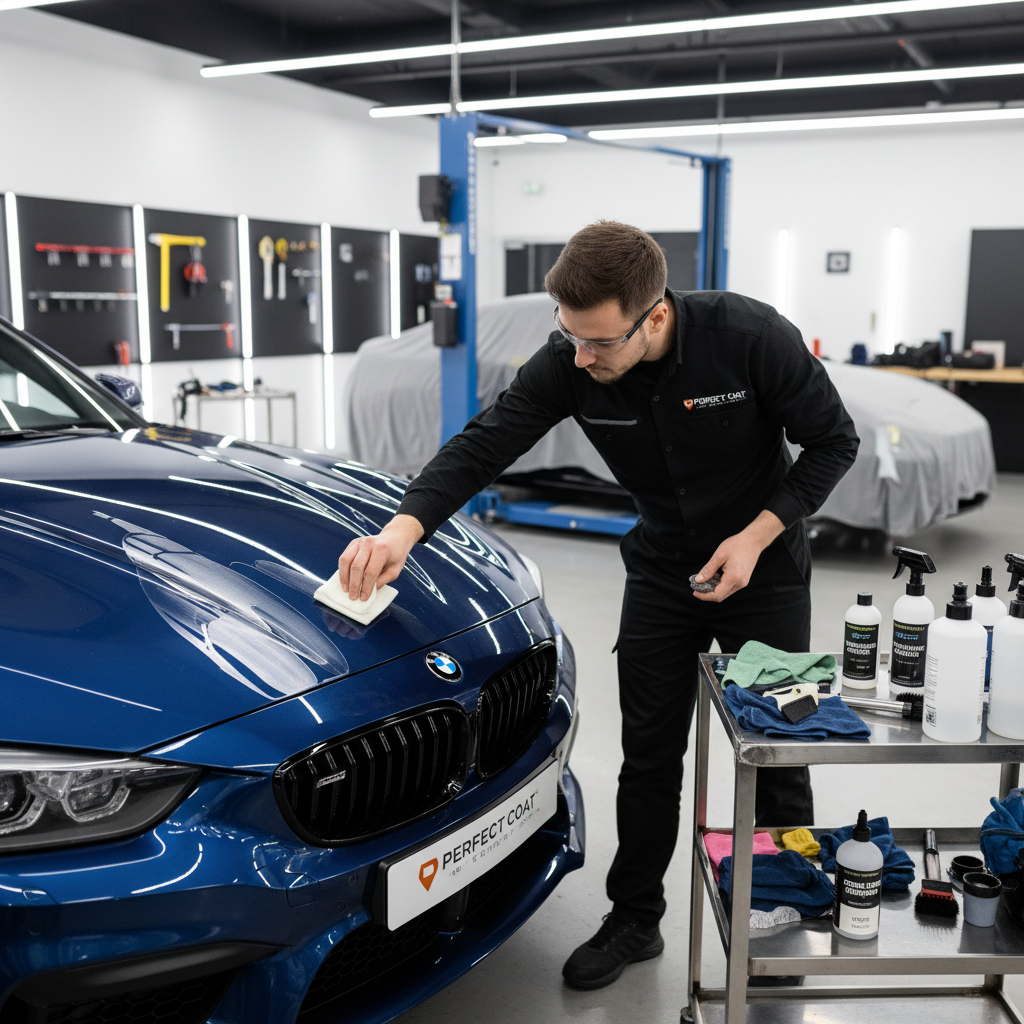Graphene vs Ceramic Coating: The Truth Behind the Labels in 2025
Walk into any car detailing shop or browse online for paint protection, and you’ll see a new wave of products promising the impossible: graphene coatings that last longer, repel water better, and resist scratches like nothing before. But here’s the secret most brands won’t tell you: most graphene coatings aren’t pure graphene at all. Instead, they’re ceramic coatings with a dash of graphene oxide—a clever twist that’s more marketing than molecular revolution.
Contents
What’s Really in Your Bottle?
Let’s cut through the hype. True graphene is a single layer of carbon atoms arranged in a honeycomb lattice, famed for its strength and conductivity. But in the world of car coatings, you’re not getting a graphene barrier. What you’re actually buying is a silica-based ceramic formula enhanced with graphene oxide—a derivative that’s easier to mix into liquids and more stable for application.
Take Ceramic Pro ION, for example. Marketed as a next-gen ceramic, it uses a two-part system that creates a dense, durable finish. It’s not labeled as graphene, but it’s among the toughest coatings available, with a 10-year warranty when installed by certified professionals. Compare that to Chemical Guys Graphene Coating, which boasts graphene oxide in its formula but still relies on a polymer base. The result? A slick, hydrophobic surface that’s slightly better at heat dispersion and water repellency, but not a quantum leap from top-tier ceramics.

Decoding the Labels: What to Look For
So how do you know what you’re really buying? Here’s your action plan:
- Check the ingredient list: If it says “graphene oxide” or “graphene-enhanced,” it’s a ceramic with a graphene additive. Pure graphene coatings are rare and usually experimental.
- Look for third-party testing: Brands like Adam’s Polishes and Ceramic Pro publish hardness ratings and durability tests. For example, Ceramic Pro ION is rated at 9H+ on the pencil hardness scale, while most graphene-enhanced ceramics hover around 9H.
- Read the warranty: A 5–7 year warranty is common for graphene-enhanced ceramics, but only a few, like Ceramic Pro ION, offer 10 years.
The Marketing Game: Why Graphene Sounds Better
Graphene is a buzzword. It’s associated with cutting-edge science, strength, and innovation. Brands use it to justify higher prices and premium positioning. But in reality, the performance boost from graphene oxide is subtle. For most car owners, the difference between a top-tier ceramic and a graphene-enhanced ceramic is minimal in real-world use.
Recent trends show that graphene-enhanced ceramics are gaining popularity, especially in humid or rainy climates where their superior water repellency shines. But in dry, sunny environments, traditional ceramics like CarPro CQuartz or Opti-Coat Pro remain strong contenders, offering similar protection at a lower price point.
Real-World Performance: What Experts Say
Detailing experts and independent reviewers agree: the gap between graphene-enhanced ceramics and high-end ceramics is narrowing. In a 2025 review by Detailing World, both types performed similarly in scratch resistance, UV protection, and ease of maintenance. The only notable difference was in heat dissipation, where graphene-enhanced ceramics kept surfaces slightly cooler in direct sunlight.

For example, Jimbo’s Detailing tested several graphene-enhanced products and found that while they offered a slicker finish and slightly better water repellency, the overall durability was comparable to premium ceramics. The verdict? Graphene is a nice-to-have, not a must-have.
How to Choose: Practical Tips for 2025
So, should you go for a graphene-enhanced ceramic or stick with a traditional ceramic? Here’s a step-by-step guide:
- Assess your needs: If you live in a humid or rainy area, a graphene-enhanced ceramic might be worth the extra cost for its superior water repellency. If you’re in a dry, sunny climate, a high-end ceramic will do just as well.
- Compare prices: Graphene-enhanced ceramics typically cost 10–20% more than traditional ceramics. For example, Chemical Guys Graphene Coating retails for around $150, while Ceramic Pro ION starts at $200 for a professional application.
- Check for warranties: Look for products with at least a 5-year warranty. Longer warranties indicate higher confidence in the product’s durability.
- Read reviews: Sites like Detailing World and Land Cruiser Forum offer real-world feedback from users and professionals.
Top Products in 2025
- Ceramic Pro ION: $200–$300 (professional application), 10-year warranty, 9H+ hardness.
- Chemical Guys Graphene Coating: $150 (DIY), 5–7 year warranty, 9H hardness.
- CarPro CQuartz: $100–$150 (DIY), 5-year warranty, 9H hardness.
- Opti-Coat Pro: $120–$180 (professional application), 5-year warranty, 9H hardness.
The Bottom Line: Is Graphene Worth It?
In 2025, the answer is nuanced. Graphene-enhanced ceramics offer slight advantages in water repellency and heat dissipation, but they’re not a game-changer. For most car owners, a high-end ceramic will provide excellent protection at a lower price. If you want the latest technology and don’t mind paying a premium, a graphene-enhanced ceramic is a solid choice. But don’t be fooled by the hype—you’re not buying pure graphene.
Ultimately, the best coating for your car depends on your environment, budget, and expectations. By understanding the chemistry behind the labels, you can make an informed decision and avoid falling for marketing tricks.

Ready to protect your car with confidence? Start by checking the ingredient list, comparing warranties, and reading independent reviews. Your car deserves the best—not just the trendiest.

